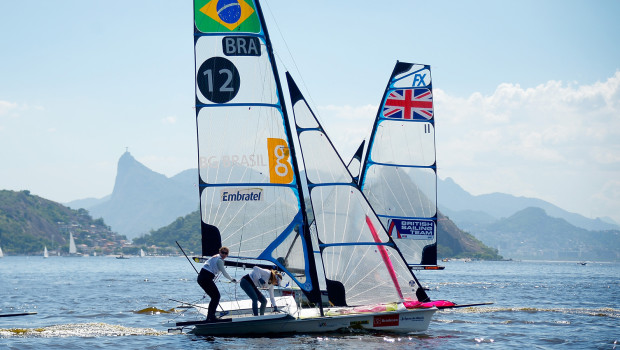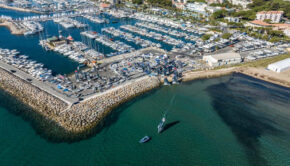Olympic venue poses significant health risk
Published on February 13th, 2014
Irish officials and team members have identified the Brazilian waters, where the 2016 Olympic sailing event takes place as a “significant health risk” to athletes.
As a result Irish High Performance team officials have requested that funding be made available for a doctor to come with them in their next visit to the Rio de Janeiro venue to assess possible health concerns associated with the untreated sewage in the water.
Other junk ranging from plastic bags to floating televisions and pieces of plastic also represent a high performance risk during racing.
Irish sailing’s High Performance director, James O’Callaghan, who visited the site last summer, believes the health risk to be so significant that the doctor may require all team members on the water to be immunised against a variety of possible infections and illnesses.
“I was out in Rio last May. Annalise (Murphy) was out there in the summer and the guys in the 49er (Ryan Seaton, Matt McGovern and coach Ian Barker) were there before Christmas,” said ISA Performance Director, James O’Callaghan. “The sewage is visible and we have identified it as a significant health risk to our athletes.
“As a result we have asked that a doctor come out with us when travel back later this year for the first 10 days of August (Note: The team will be attending the 2014 Olympic Test Event in Rio de Janeiro, on August 2-9).
“We need to know if we need to take any special immunisation precautions. It is a concern for us. Even if the boats don’t capsize you are getting spray because of your speed across the water. If you have a cut we want to know what the chances are of infection or what precautions we might take because that could affect the athlete’s performance. It’s a genuine concern.”
Horse carcass
Sailors, who have been to Rio for training events, have reported entire trees floating in the bay, chunks of timber with nails protruding, swollen mattresses and countless plastic bags. One also said he saw a floating horse carcass in the 148 square mile bay (which opens into the Atlantic just above Rio’s famed Copacabana beach) which also takes untreated waste.
According to Brazilian officials, only 34 per cent of Rio’s sewage is treated with the rest spilling into the surrounding waters. Fifteen cities surround the sailing area of Guanabara Bay with eight million residents producing over one million litres of sewage per minute.
“The sailing authorities in Rio are pressing the authorities,” added O’Callaghan. “There is no denial that there is a problem with the water quality. In our training regatta before Christmas it was laughable in terms of performance.
“In a sense it is less of a problem than the health issue because in Beijing they had a similar problem with debris in the water and they raked the course every day and that seemed to pick up a lot of the material.”
Most illnesses arising from contact with sewage are caused by pathogens, the most common of which are bacteria, parasites, and viruses. They cause a wide variety of acute illnesses including diarrhea, Hepatitis A, Tetanus and Leptospirosis, which can be lasting and serious.
Source: The Irish Times – Feb. 13, 2014
PHOTOS: Getty Images published photos (on Jan. 22, 2014) rom the heavily polluted Guanabara Bay in Rio de Janeiro. Although Rio’s Olympic bid included a promise to clean up the filthy bay, industrial and human pollution still remain a major problem. Click here for photos.









 We’ll keep your information safe.
We’ll keep your information safe.